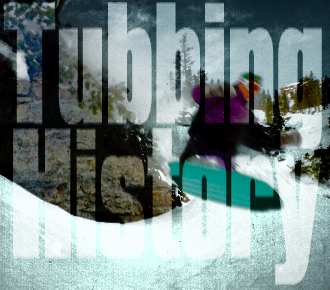
A major turning point in the development of tubbing occured at the Butterfield camp of 1983. Located near Kennecott Copper Mine in Bingham, Utah, Butterfield Canyon had been a favorite tubbing location for years. It was during this camp that several rookies pioneered knee-tubbing which has remained a popular style of tubbing due to its all-terrain versatility, added control, and slight speed improvements over the traditional sit-down style.
Since Butterfield, tubbing has achieved almost cult status among dozens of winter sport enthusiasts along the Wasatch Front. Regardless of the weather and snow conditions (provided there is snow), tubbers may be found enjoying the clear air of Sombrero Peak, the breath-taking vistas of Circle-All Peak, the rugged terrain of Mount Kessler, or the dark beauty of Millcreek Canyon.
Over the years, runs have been discovered at a variety of locations, too numerous to name, though a few are listed here for the reader's interest: Smith and Morehouse Reservoir, Gobbler's Knob, Circle-All Peak, Mount Kessler, Scottie's Bowl, Wiersdorf's Cabin, Thayne's Canyon, and Neff's Canyon.
Some of the latest tubbing modifications have come after years of testing and thought. These modifications reflect careful attention to movement, performance, and safety. Some tubbers are now replacing the cross-bungee restraints with newer nylon webbing with buckles or Velcro bindings. Another enhancement involves riveting two tubs together for stiffness.
Tubbing has evolved from a simple backyard diversion to a major force in winter recreation technology. Tubbers seek improvements to the mode using innovative thinking and brute force.